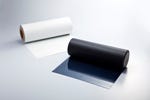Mitsubishi launches barrier sheet for solar cells
Exploiting what it calls the world’s highest level of water vapor barrier properties, Mitsubishi Plastics Inc. (MPI; Tokyo) is now supplying Barrier Photovoltaic (PV) Back sheet film for use in solar cells. In July 2008, MPI launched X-Barrier, with water vapor transmission of 10-4 g/m2/day.
January 12, 2010
Exploiting what it calls the world’s highest level of water vapor barrier properties, Mitsubishi Plastics Inc. (MPI; Tokyo) is now supplying Barrier Photovoltaic (PV) Back sheet film for use in solar cells. In July 2008, MPI launched X-Barrier, with water vapor transmission of 10-4 g/m2/day. In April 2009, MPI began marketing View-Barrier films for use in the front panels of electronic devices, including dye-sensitized solar cells and organic electro-luminescence display panels that require anti-reflection, UV-cut, anti-glare, low shrinkage, process suitability, and superior gas barrier performance as a means to substitute glass plate.

Mitsubishi Plastics Back-Barrier
Back-Barrier is the latest offering, targeting back sheets for crystalline silicon solar modules that require a humidity barrier of 0.2g/m2/day, and one for thin PV cells that need humidity barrier of 0.02g/m2/day. In addition to its high humidity barrier, MPI is emphasizing that the new sheet is halogen and metal free, while offering easy bonding to encapsulation materials like EVA (ethylene-vinyl acetate). Back-Barrier is also being developed for use in dye-sensitized and organic thin-film solar cells, with a much higher humidity barrier. MPI expects two-year sales of ¥5 billion for X-Barrier products. —[email protected]
About the Author(s)
You May Also Like


